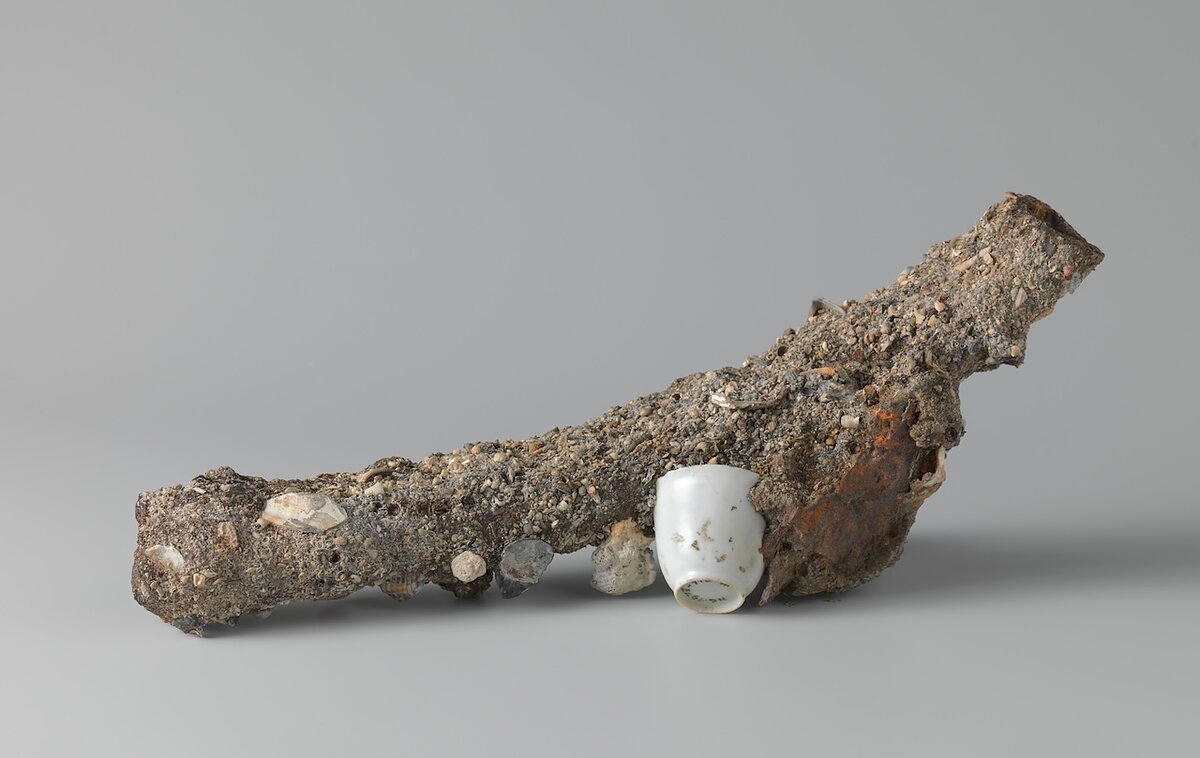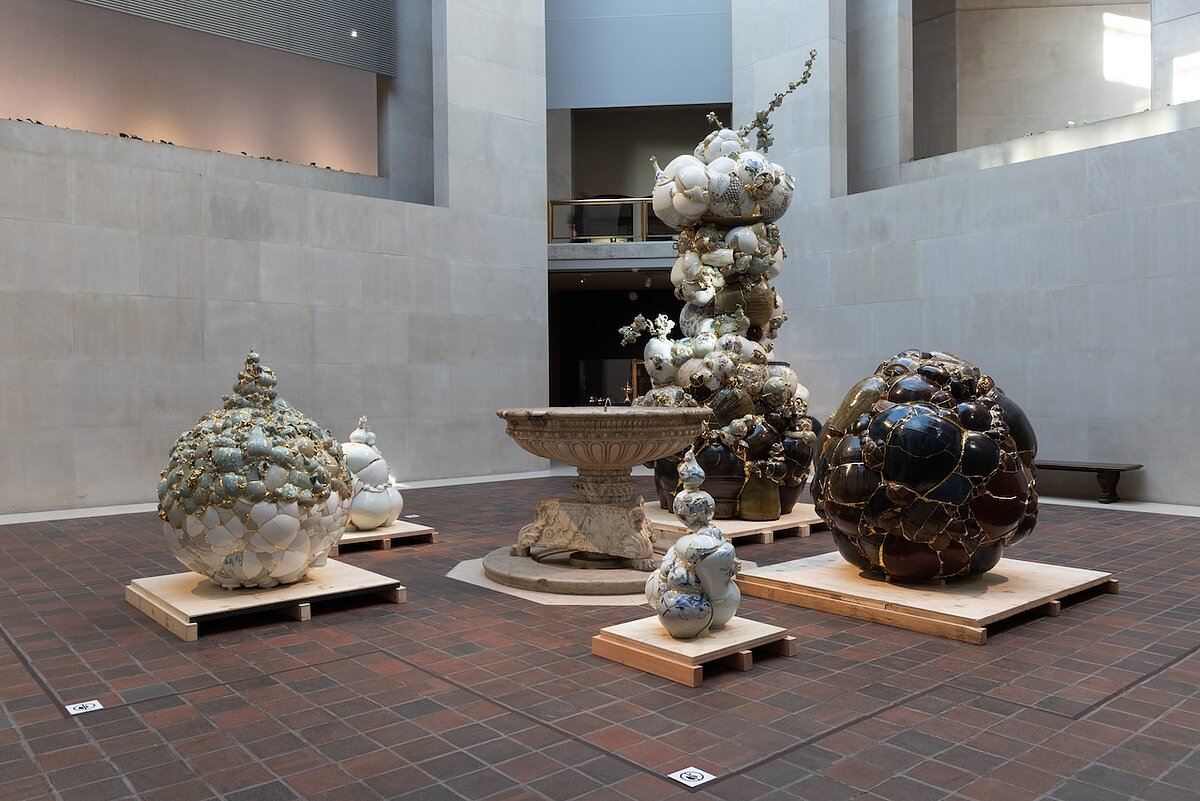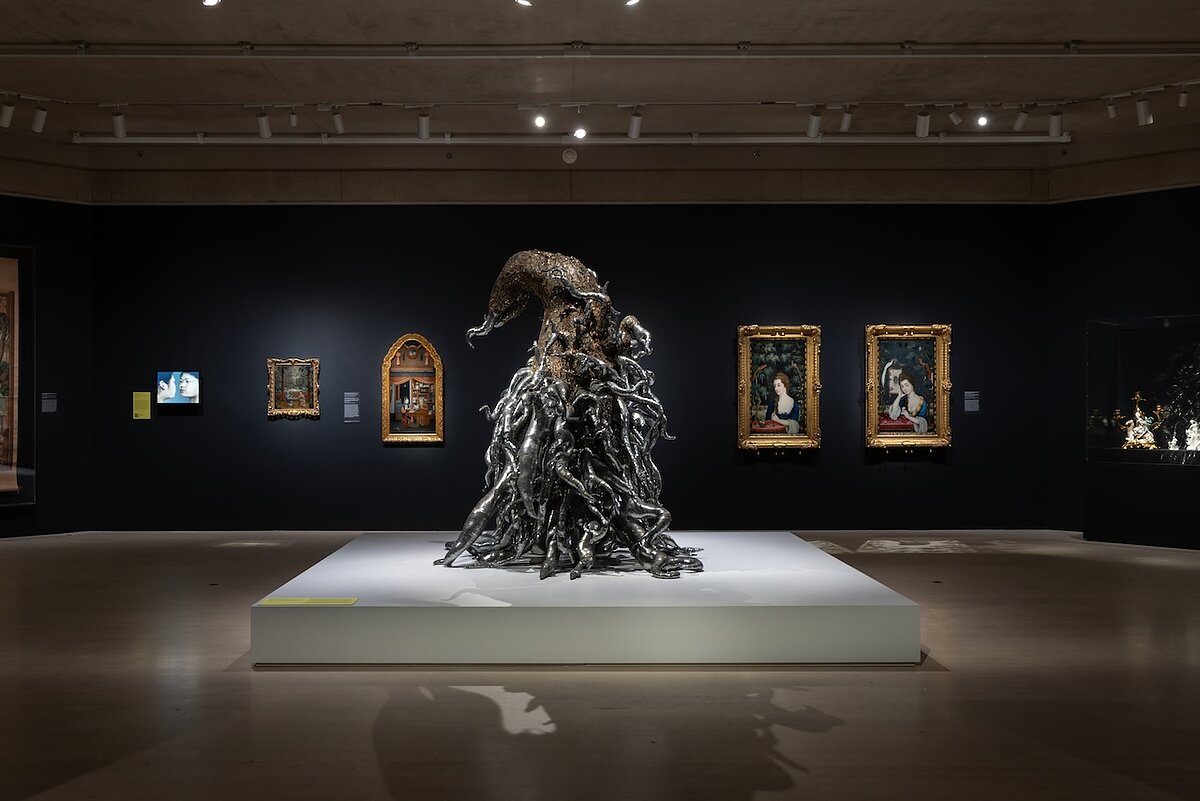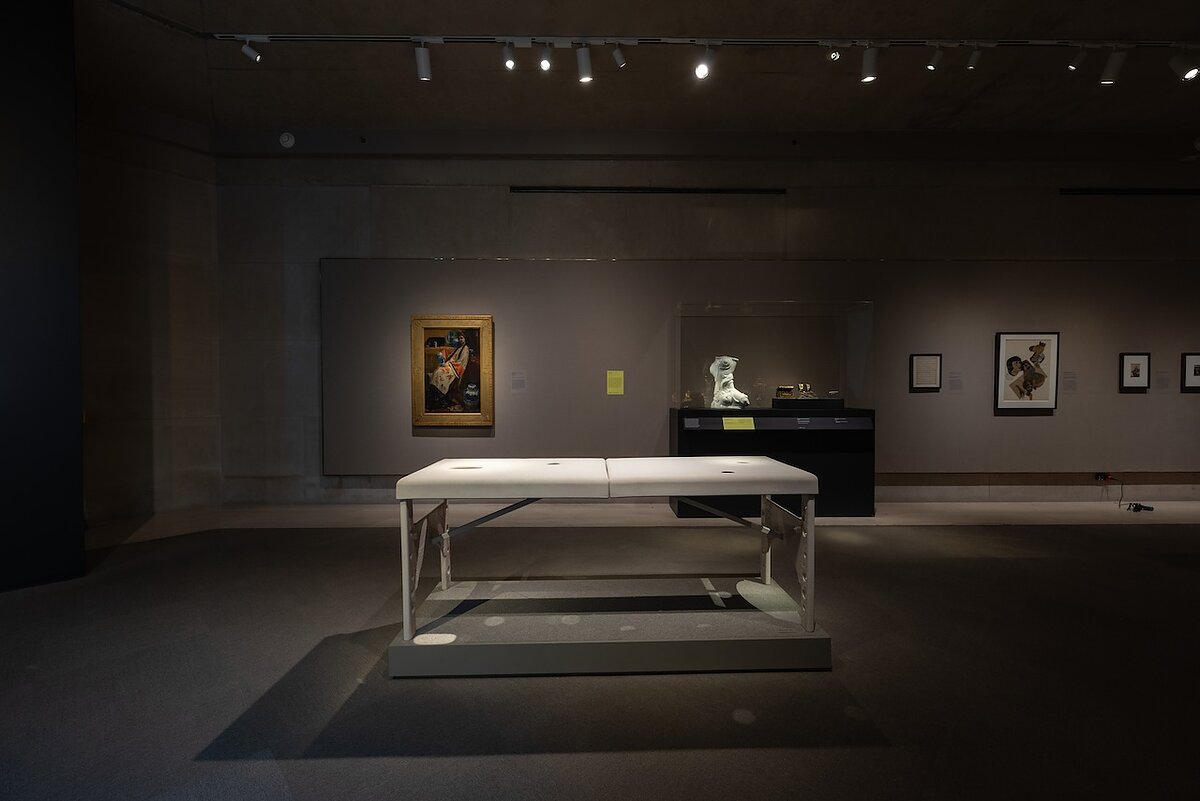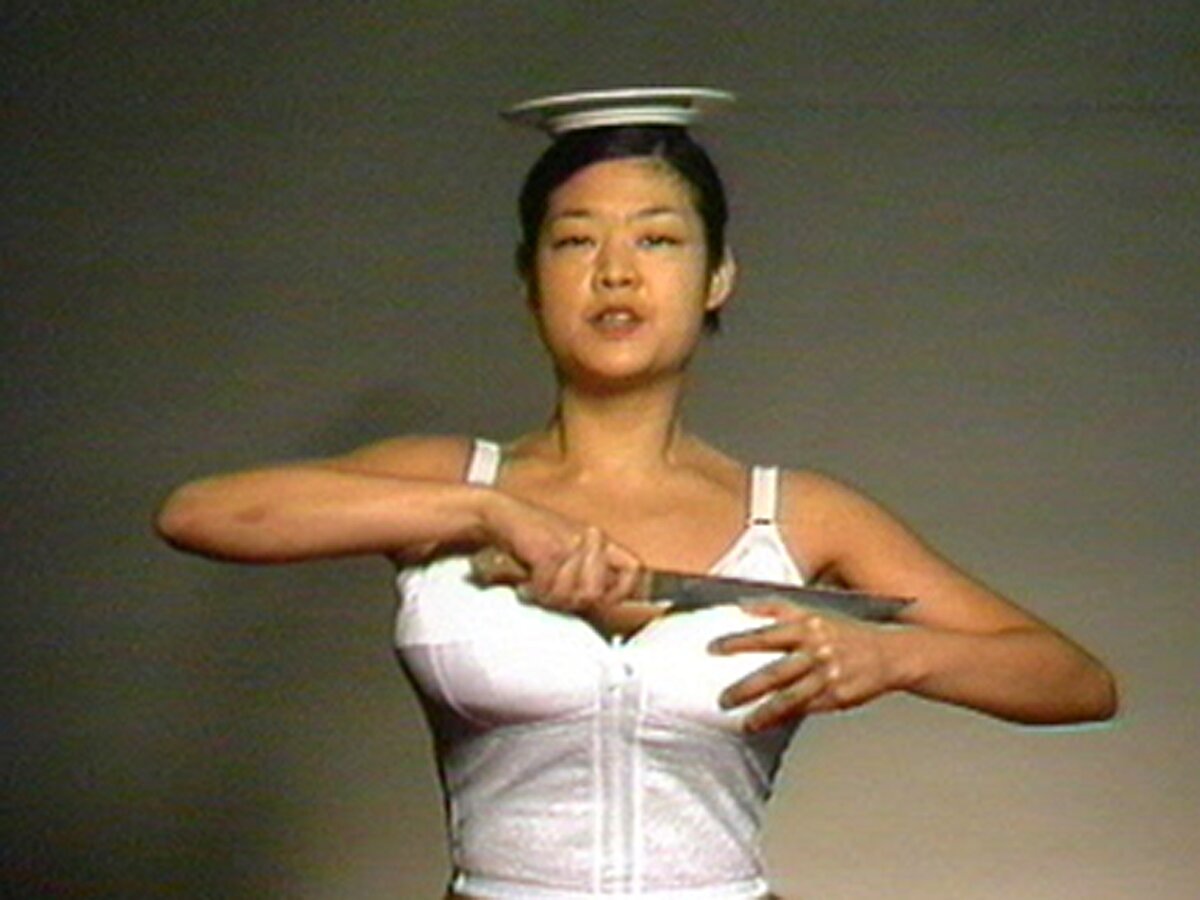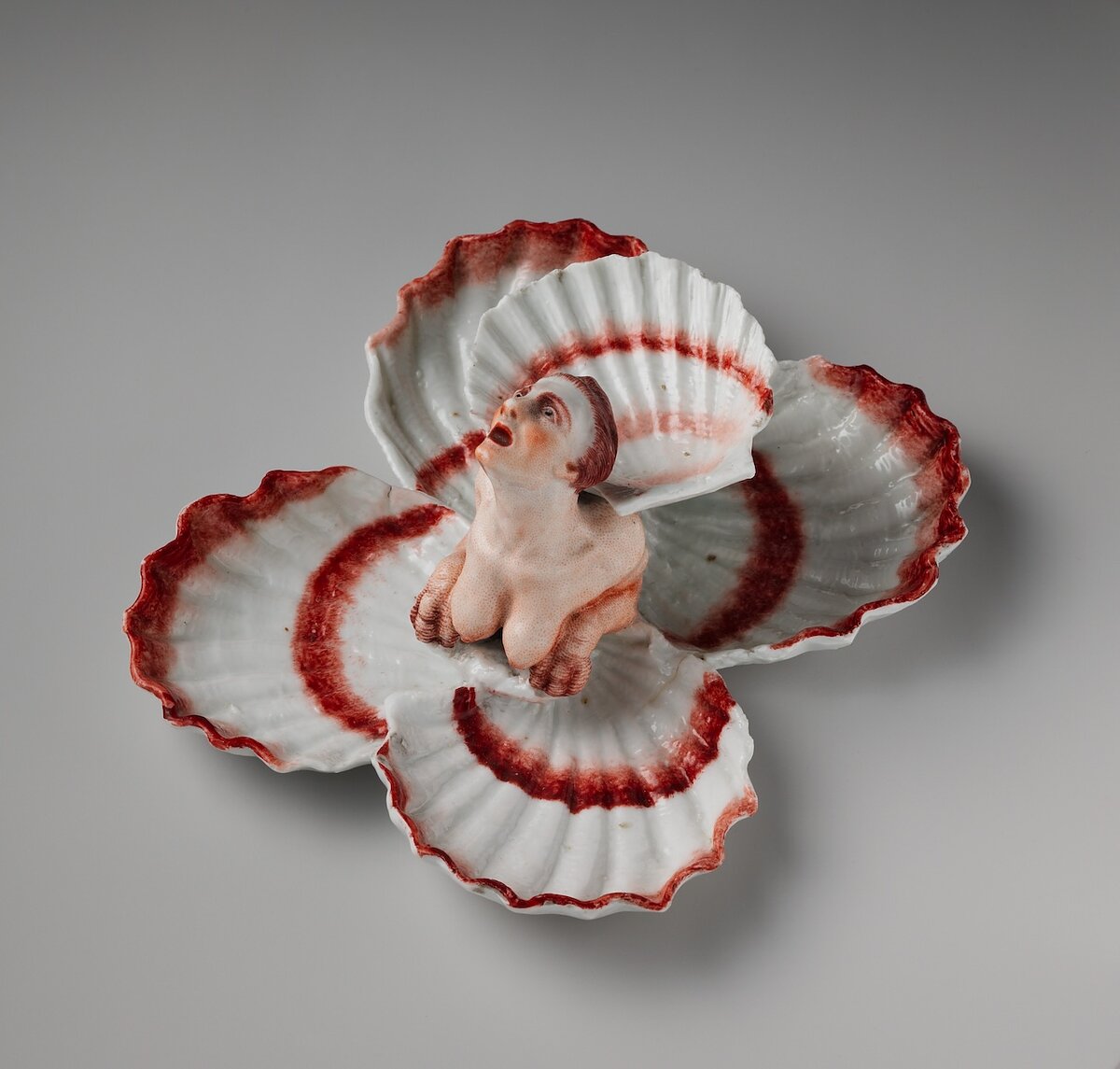“Monstrous Beauty” Offers Oceans of Possibilities for Asian Femininity
In 1613, the Witte Leeuw (White Lion), a Dutch trading ship, sank in the South Atlantic Ocean while carrying cargo from Asia back to the Dutch Republic. Upon its descent into the sea, a Ming porcelain cup became fixed upon a fragment of the ship, eventually transformed into an artwork by the current and centuries passing, conjoined by decay and new marine life.
This “sea sculpture” was salvaged in 1967, and its hybrid form is now displayed in the temporary exhibit “Monstrous Beauty: A Feminist Revision of Chinoiserie,” currently on view in the Metropolitan Museum of Art through August 17, 2025. Curated by Iris Moon, the exhibit interrogates the aestheticization and commodification of porcelain—and how these attitudes were (and are) co-constructive to conceptions of Asian femininity. The eclectic exhibition contains nearly 200 works that range from 16th-century European chinoiserie to contemporary works by Asian and Asian American women artists, creating a discourse that spans across oceans and time.
Moon leans into the fascination with chinoiserie in the West, presenting a thematic organization of the decorative style that is divided into five sections: “Early Arrivals of Porcelain in Europe”; “Mary II and Porcelain Obsessions”; “Performing Domesticity”; “Porcelain Figurines and Womanhood”; and “Afterlives of Chinoiserie.” Despite its overall chronological structure, Moon prompts a critical engagement with this history by departing from the linearity typically used to exhibit chinoiserie—a curation where, Moon tells me, “the mechanisms of exoticism active in society today remain unquestioned.” Works by contemporary women artists from Asia and its diasporas, including Yeesookyung, Heidi Lau, and Patty Chang, are interspersed throughout the exhibit, demarcated by neon yellow signs. Moon explains how these performance and visual art pieces “effectively jolt the viewer out of the seductive illusion of the past as a nostalgic landscape irrelevant to the way we live today.”
Though not self-evident in the objecthood of porcelain itself, racial meaning has historically been constituted by the decorative and derived from the inanimate. The rise of the decorative style in the West, as brought from the “Far East,” has been projected onto social and cultural conceptions of Asian femininity. This entwinement of object and the racialized, gendered body is captured by cultural theorist Anne Anlin Cheng’s concept of ornamentalism, which is heavily cited in the exhibition. “This is flesh congealed into porcelain and porcelain invoking the possibility of flesh,” writes Cheng.
Consider, for instance, porcelain’s fragility; it seems likely to meet a fate of brokenness. The precarity of porcelain in a material sense parallels the precarity of porcelain in a symbolic sense. Both in spite of and inspired by the history of chinoiserie, Asian femininity is continuously (re)constructed in multiple understandings of both body and object. Moon’s curation primes us with a revisionary spirit that refuses to concede a flattened notion of Asian femininity and instead embraces its potentiality.
Together, the featured contemporary pieces generate alternative possibilities that may arise even within the conventionally Orientalizing discourse around chinoiserie. The cohabitation of historical artifacts and contemporary art visualize this contradiction, allowing the different genres to both evoke and complicate one another in the shared space.
Other pieces in Moon’s curation lean into this hybridity as a natural component of, rather than being irreconcilable with, the style of chinoiserie. This includes the artifact entitled Flower Pyramid (Dutch, 1670-1771/75), credited to the “Greek A” Factory and De Metaale Pot Factory, and the contemporary art piece From the Heart of the Mountain Anchored the Path of Unknowing (2023) by Heidi Lau. The former is free-standing while the latter is anchored to the wall, but both are essentially assemblages of ceramic parts. For both, their hybrid appearance accentuates their structure and their precarity.
Moon puts on display the fragility of chinoiserie and revels in it. Featured in the exhibit multiple times is work by performance artist Patty Chang. In one video performance, entitled Melons (At A Loss) (1998), Chang balances a ceramic plate atop her head while scooping flesh from a melon in place of her breast, before ultimately smashing the plate out of frame. The sound of porcelain shattering rings out in that stretch of the exhibit, haunting the other objects on view.
Chang also contributed the exhibition’s final piece, commissioned by Moon specifically for the exhibit—Abyssal: Massage Table (2025), which “recalls the invisible labor of Asian women, including the six Atlanta spa workers murdered in 2021,” according to the wall text. It’s a ceramic massage table with holes carved out of it. The bottom is glazed while the top is not, its rough surface starkly unfinished.
Chang intends to sink the table in the Pacific Ocean as a deposit for growing coral after the exhibit closes, making Abyssal as generative as it is ephemeral. From those punctures, from the rough surface of unglazed ceramic, from the coral polyps that will eventually settle, Abyssal implies alternative possibilities for the material reality of the piece as well as for the legacies of the labor and lives that it represents. In time, Abyssal will join the fate of the Ming porcelain aboard the Witte Leeuw, its handcrafted form overcome and changed by the sea.
Throughout “Monstrous Beauty,” we are asked to settle in the cracks that form rather than take them as reasons for disposal; we are called to appreciate the ongoingness and the (after)lives of aesthetic and cultural projects. Moon’s revisionary approach enables us to reframe the style of chinoiserie as capacious rather than reductive, and the renewed context invigorates boundless potential for Asian femininity in the many, infinite ways that it may be.
“Monstrous Beauty: A Feminist Revision of Chinoiserie” is on view at the Metropolitan Museum of Art through August 17, 2025.
—Hannah Bae (she/her) is a writer and communications specialist based in Brooklyn, NY. She earned a B.A. in women’s, gender & sexuality studies from Williams College in 2024 and is deeply interested in how the visual and performance arts can be a channel for understanding identity/community, care, and utopic thinking.
